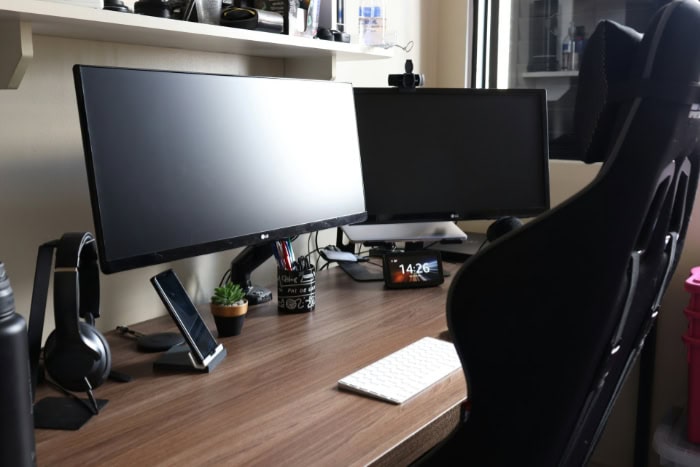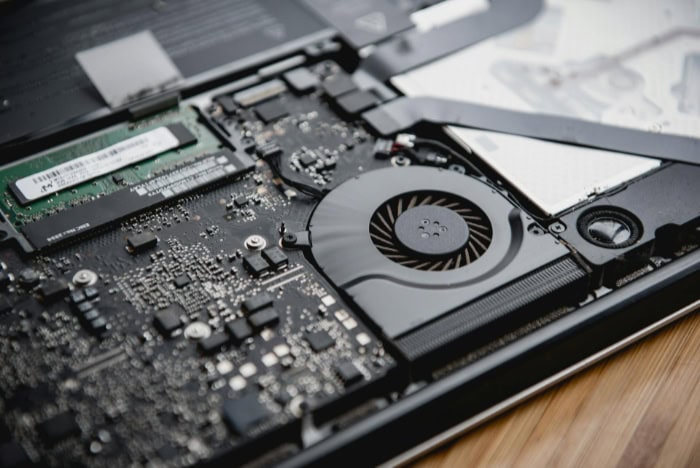Sleep vs. Shutdown: What Suits Your Routine Best?

Balancing device performance and energy savings is a daily puzzle for anyone who relies on computers or laptops. Faced with the choice between putting your machine to sleep or shutting it down completely, it is easy to default to old habits or guesswork.
Each option promises its own benefits, but which one truly fits your routine and protects your hardware in the long run?
Fundamental Mechanics
Choosing between sleep and shutdown is more than just a simple button press. Each option uses distinct methods to manage your computer’s power and memory, which affects everything from how quickly you can resume working to how safely your data is stored.
How Sleep Works
Sleep mode acts like a digital pause button for your computer. All your open files, running applications, and system states are temporarily stored in your device’s RAM, which is a type of memory that needs continuous power to retain information.
By keeping the RAM powered, your computer can wake back up almost instantly, returning you to exactly where you left off. During sleep, the system conserves energy by minimizing power to most components.
This balance between speed and energy savings makes sleep mode especially handy for short breaks or quick pauses throughout the day.
Shutdown Process
Shutting down your computer is a much more definitive action. The system closes all programs, saves your data to the permanent storage (like a hard drive or SSD), and then completely cuts off power to its hardware.
No information remains in the RAM, and the device goes into a powered-off state. When you turn the computer back on, it goes through what’s called a “cold boot,” reloading the operating system and all necessary files from scratch.
This process takes longer but ensures that your system starts fresh, free from any temporary issues or memory clutter that can sometimes build up during regular use.
Technical Contrast
Sleep and shutdown differ fundamentally in how they handle data. In sleep mode, information lives in RAM, which is known as volatile memory because it loses everything when power is removed.
That’s why a computer in sleep mode will lose unsaved progress if it runs out of battery or is unplugged for too long. On the other hand, shutdown relies on non-volatile storage, such as hard drives or SSDs, which retain data without a power source.
All your files, system settings, and data are safely written to these drives, making shutdown a more secure choice when you need to guarantee nothing is lost during longer periods of inactivity. This technical distinction shapes the practical reasons to choose one state over the other, depending on how and when you plan to use your device next.
Hardware & Longevity Impact

Device health and lifespan often stir debate when it comes to choosing between sleep and shutdown. Many users worry about heat buildup, potential stress on parts, and how different power modes influence how long their computers last.
Unpacking the real effects on hardware helps clarify which habits are best for keeping your system in top shape for years to come.
Heat Accumulation
Every electronic component produces some level of heat during operation, including while in sleep mode. Sleep keeps the memory and certain background systems powered, resulting in a small, constant trickle of heat.
Although this amount is minimal compared to full use, it can still contribute to a slightly higher baseline temperature, especially in laptops or devices with less efficient cooling. In contrast, shutting down the device halts all power to the internals.
Components cool down completely, giving them a rest from thermal stress. Regular shutdowns can be beneficial if your device is prone to overheating or if you store it in a warm environment.
Component Stress
Concerns about frequent shutdowns or startups causing harm have persisted for years, yet modern computers are built to handle repeated power cycles gracefully. Older hardware once suffered from mechanical wear due to frequent on-off switching, but solid-state drives and improved power management systems have overcome most of these drawbacks.
Memory, processors, and other components are far less vulnerable to wear from normal use patterns than many people believe. Instead, prolonged exposure to high temperatures, power surges, or dust buildup tends to be more damaging.
Using sleep mode for short breaks and shutting down for longer periods helps balance convenience and component preservation.
Optimal Cycles
No single rule fits every device or user, but some general guidelines can help. Sleep mode works best for short intervals between use, minimizing wear while offering near-instant access.
For those who leave their machines on throughout the workday, letting the device sleep during meetings or brief errands reduces both stress and energy usage. Shutdown becomes ideal for overnight gaps, extended travel, or any situation where the computer will remain unused for many hours.
This habit not only allows the hardware to cool but also ensures that any minor software glitches or memory leaks are reset, providing a fresh start the next time the device is powered up. By alternating between these two modes to match your real usage patterns, you give your computer the best chance at a long and healthy life.
Energy Efficiency

Saving power is often one of the biggest motivators for deciding between sleep and shutdown. Those moments when your device sits idle, whether at work, at home, or overnight, can rack up surprisingly different energy costs depending on which mode you choose.
Power Draw Analysis
Devices in sleep mode continue to draw a small amount of power to keep memory and background functions alive. Most computers consume just a few watts during sleep, which is significantly less than during active use, but far from zero.
Some newer models are even more efficient, yet over time, the energy used by multiple sleep cycles can still be meaningful. Shutdown, on the other hand, virtually eliminates all power use from the main device itself.
Once powered off, the computer stops drawing from the wall, apart from any minimal standby power needed by the hardware to respond to the power button or scheduled wake events.
Vampire Power
Even after you shut down your computer, some energy continues to trickle out of the wall socket and into the power adapter or charger. Often called “vampire power,” this constant, low-level drain comes from adapters and chargers left plugged in, even when the device isn't operating.
While the computer might be off, the adapter’s internal circuits remain partially active to detect commands, which can add up over a year. Unplugging chargers and using smart power strips can help eliminate these small but persistent losses for those especially concerned about efficiency.
Cost Implications
While the amount of electricity used by sleep mode seems minor on a day-to-day basis, it can add up over the course of a year. If a desktop uses around 2 watts in sleep mode for 16 hours a day, that totals about 12 kilowatt-hours (kWh) per year, roughly the power used by leaving a small LED lightbulb on.
Shutdown minimizes energy use to the lowest possible level, which, across multiple devices and months, can translate into noticeable savings on your utility bill. For most households, the financial difference may seem modest, but for businesses with many computers or environmentally conscious users, even small adjustments to power habits can have a positive impact on both energy bills and carbon footprint.
Balancing quick access with reduced waste can maximize both convenience and efficiency.
Usage Scenarios & Optimization
Adapting your power management habits to fit real-life routines not only improves convenience but can also save time, money, and effort. Different situations call for different modes, and knowing when to use sleep or shutdown ensures devices are ready when you need them while staying safe and efficient during downtime.
Ideal Use Cases
Short breaks between tasks are perfect opportunities for sleep mode. If you are heading to a meeting, grabbing lunch, or planning to return to your desk within a few hours, putting your device to sleep means you can jump right back in without delay.
Longer gaps between use, such as overnight, weekends, or during trips, call for a full shutdown. Shutting down stops all energy consumption by the main hardware, giving your computer a true rest and reducing exposure to unexpected power surges or system errors.
This mode also supports the installation of certain software updates or patches that require a full restart to take effect. Choosing shutdown in these cases safeguards both your files and the internal health of the device, especially during periods of inactivity or unpredictable power conditions.
Laptop-Specific Tactics
For laptops, power management requires an extra layer of care, especially when you are on the move. Sleep mode keeps the battery slowly discharging to keep memory alive, which can become an issue if the laptop stays in a bag for an extended time.
To avoid an unexpected dead battery or accidental overheating, shutting down before packing your laptop for travel is a smart step. Hibernation, a mode available on many laptops, provides an alternative by saving work to disk and fully powering down, combining the safety of shutdown with rapid resume for later use.
Choosing the best mode based on your plans helps preserve battery health and ensures your device is ready to go when you reach your next destination.
Practical Trade-offs

Everyday device use comes with its own set of trade-offs, and the choice between sleep and shutdown modes is no exception. Each setting offers unique advantages that cater to different priorities, whether you are aiming for lightning-fast access to your work, lower electricity bills, or smoother device maintenance.
Time vs. Efficiency
Sleep mode is a favorite for anyone who values an instant start. Waking your computer from sleep takes just seconds, letting you resume your work or entertainment without waiting for a full reboot.
This quick access is a major advantage for users who regularly step away from their screens throughout the day. On the other hand, frequent sleep mode does come with a higher overall energy cost than shutting down completely.
Although the power draw is minimal on a per-use basis, it can add up over weeks and months. Shutting down, while slower to restart, guarantees the lowest possible power use and is often best for extended inactivity.
Maintenance Balance
Balancing convenience with system upkeep often means mixing power-saving habits. Letting your device sleep daily ensures fast access whenever you need it, while scheduling a full shutdown every week or two helps keep things running smoothly.
Shutdowns let your system process important updates that cannot install during sleep, clear temporary files, and reset lingering performance issues. This simple routine combines the best of both worlds, offering the comfort of quick resume with the stability of a freshly restarted system.
Myth Debunking: “Always-On” Longevity Claims
Some believe that leaving devices on or constantly in sleep mode extends their lifespan, but modern hardware is built to handle regular power cycles without damage. Earlier computers or mechanical hard drives were more sensitive to frequent on-off actions, but contemporary components are much more robust.
Putting your device to sleep or shutting it down as needed does not shorten its life or cause hidden wear. If anything, using both options strategically protects your device from issues like persistent heat or software glitches, helping it stay reliable and responsive over time.
Modern computers are engineered for real-world use, so you can confidently choose the mode that fits your day without worrying about premature wear.
Conclusion
Choosing between sleep and shutdown no longer has to be a guessing game. Sleep mode excels when you need agility, making it easy to step away and return without waiting.
Shutdown, on the other hand, is the go-to move for system maintenance, deep rest, and energy savings during longer breaks. For most users, a hybrid approach delivers the best results: let your device sleep during busy days so you maintain momentum, then power down completely at night or before extended absences.
With this flexible routine, you get the speed and convenience you want while giving your computer the care and upkeep it deserves.


